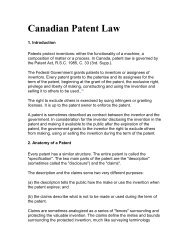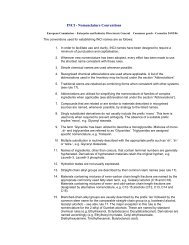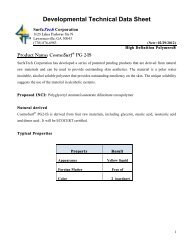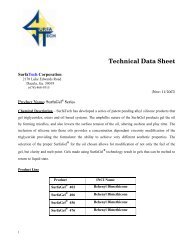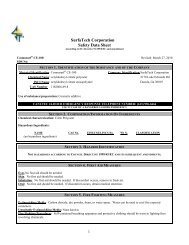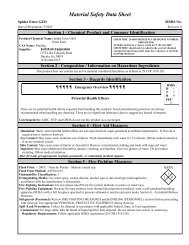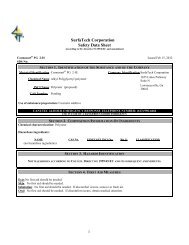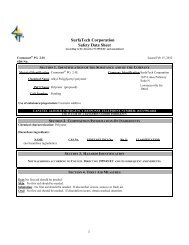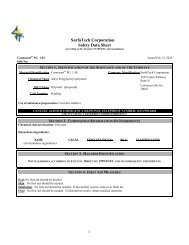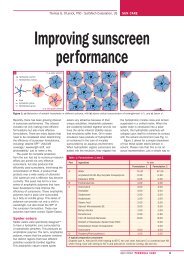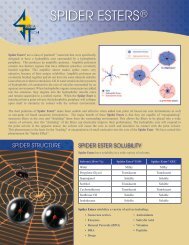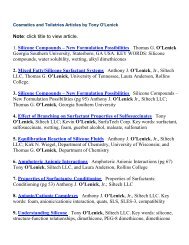Create successful ePaper yourself
Turn your PDF publications into a flip-book with our unique Google optimized e-Paper software.
A key concept in the making of compounds via <strong>Reppe</strong> chemistry is the ability to<br />
convert acetylenic bonds ( triple bonds) into ethylenic bonds (double bonds) and into<br />
fully saturated materials. The preparation of saturated compounds is relatively easy and<br />
can be accomplished using standard hydrogenation, but stopping at a double bonded<br />
material is quite a bit more complicated. A series of patents collectively called<br />
Technology for Converting Compounds of the Acetylene Series into Compounds of the<br />
Ethylene Series, was issued to Dr. <strong>Reppe</strong>. Specific catalysts capable of selective reaction<br />
were developed along with processes for their use. Typical are the following patents.<br />
SH-1 2,207,071 Process of Converting Compounds of the Acetylene Series into Compounds<br />
of the Ethylene Series<br />
SH-2 2,207,070 Process of Converting Compounds of the Acetylene Series into Compounds<br />
of the Ethylene Series<br />
SH-2 2,267,749 Process of Converting Dihydroxy compounds of the Acetylene Series into<br />
Dihydroxy Compounds of the Ethylene Series<br />
8. Tetrahydrofuran<br />
Tetrahydrofuran is an important new building block in synthetic chemistry, as<br />
well as a good solvent for many types of compounds including also such high polymers<br />
as polyvinylchloride, polyvinyl carbazol, natural rubber and Buna. It enters many<br />
reactions. Adipic acid can be made from it. In the above aqueous solution of 30-35%<br />
butanediol 1,4, obtained by hydrogenation of the reaction product of formaldehyde and<br />
acetylene, the former can be dehydrated to tetrahydrofuran in said solution by the<br />
addition of a small amount of H 3 PO 4 and maintaining the pH at least 2 and distilling the<br />
mixture at a temperature of about 260-300º C. and a pressure of 60-100 atm; the THF<br />
(tetrahydrofuran) is easily volatilized under these conditions and is quantitatively<br />
produced. The Na and Ca ions in the solution added for control of the pH value are<br />
substituted by H ions and by ion-exchange media (Volfatite). THF<br />
THF-1 2,251,895 Production of Tetrahydrofuranes<br />
THF-2 2,251,835 Production of Tetrahydrofurane from 1,4 – Butylene Glycol<br />
THF-3 2,251,292 Production of Tetrahydrofuranes<br />
6



